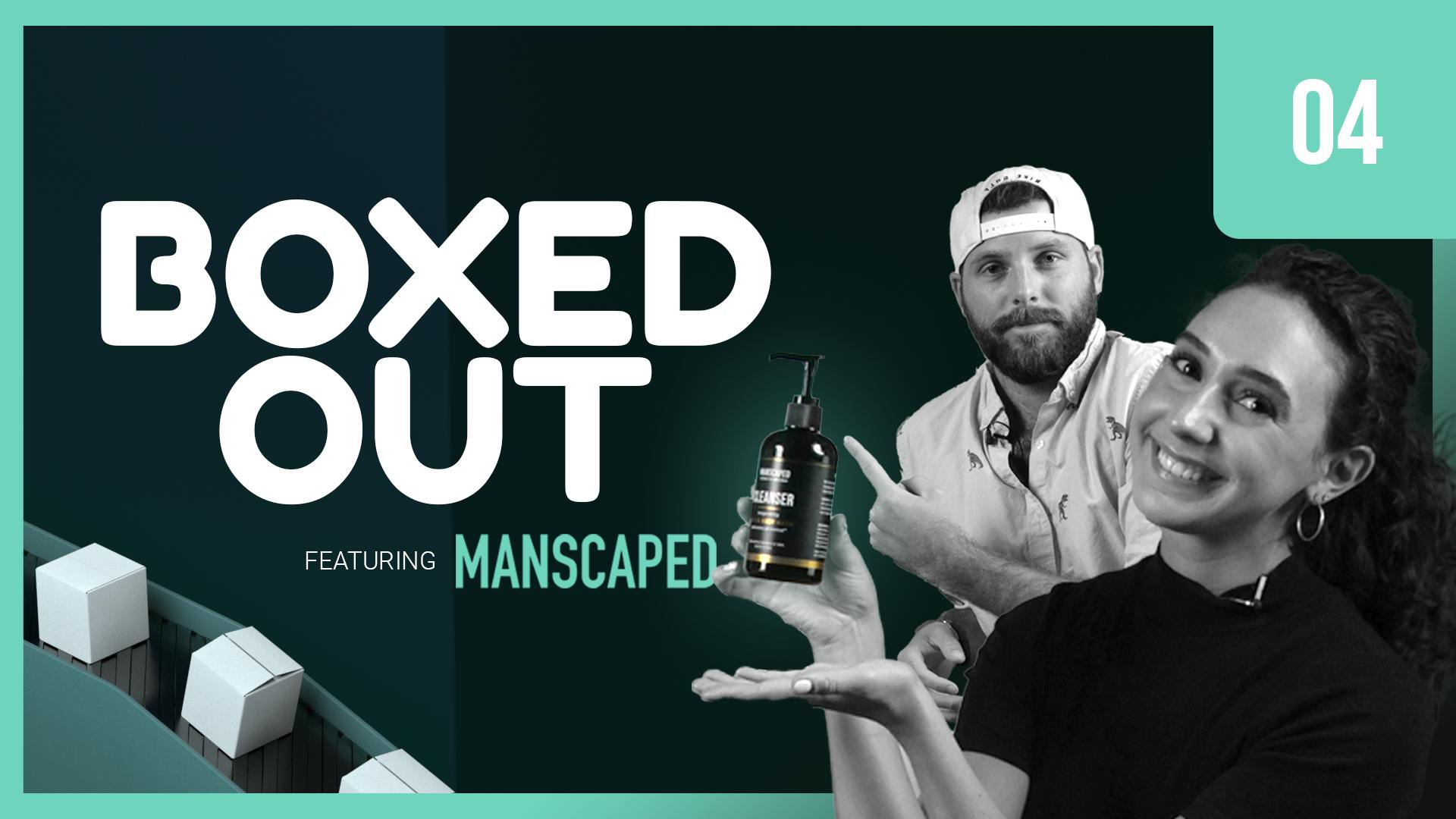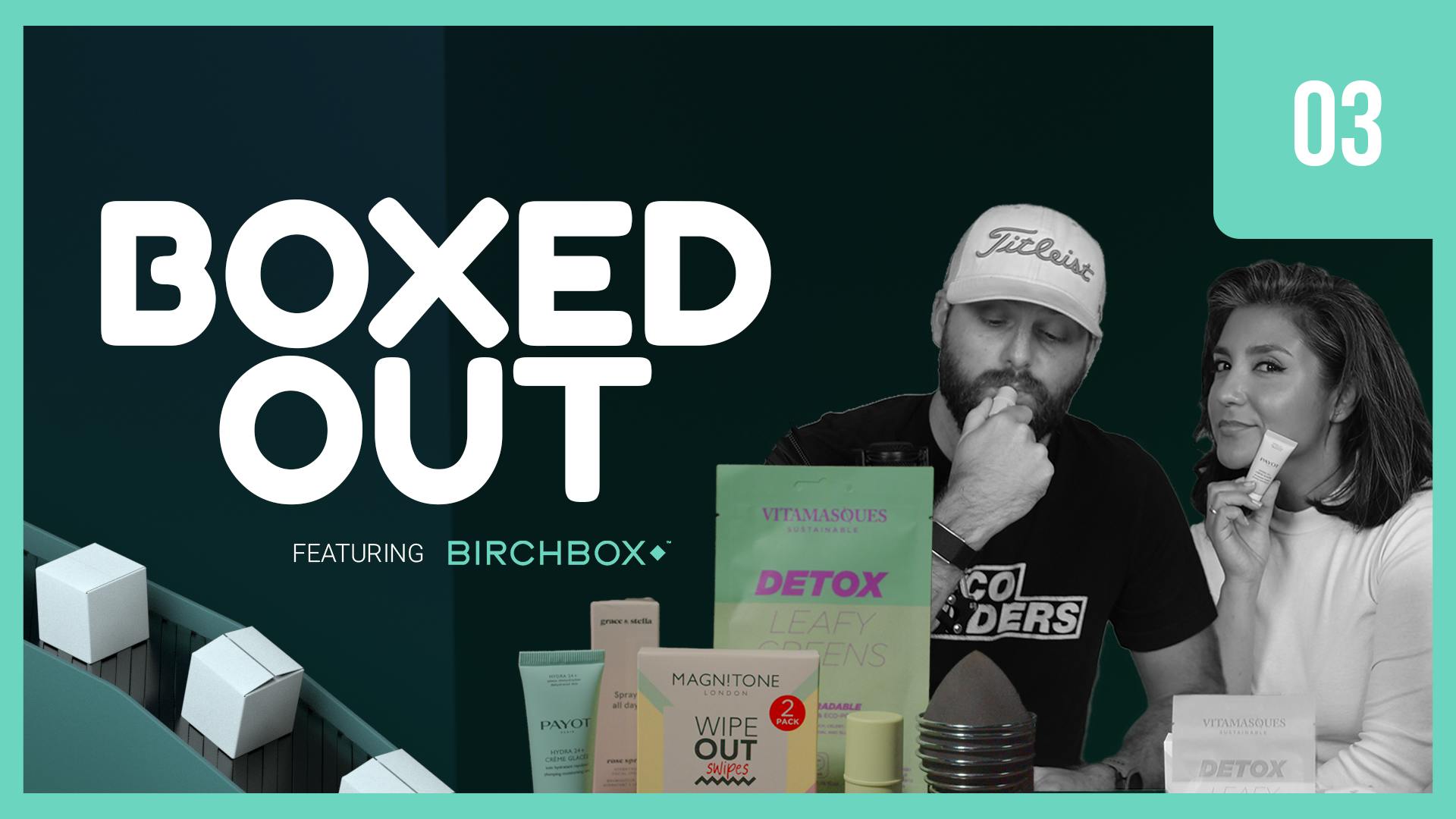
Lovepop needs a pop of retention
This episode might reference ProfitWell and ProfitWell Recur, which following the acquisition by Paddle is now Paddle Studios. Some information may be out of date.
Please message us at studios@paddle.com if you have any questions or comments!
Today we're talking about Lovepop, a company that's taken on the multi-billion dollar greeting cards market by using their unique pop-up designs to novelly delight customers. We're going to learn how Lovepop used strong positioning and execution to their advantage. Then—we're breaking apart their subscription retention strategy, sharing what was done well and not so well.
Lovepop’s creative combination of an ancient art form with modern-day technology has disrupted and revived the physical greeting card industry. But are they putting the same level of detail and care into their retention strategy that they put into each card?
Key takeaways:
Below are some valuable takeaways you can implement in your own business.
More upsells and add-ons
With such an emotional purchase and having such an extensive variety of designs, Lovepop should be taking advantage of the opportunity to expand the average order value. Learn more about the customer in the onboarding, or after, and start offering up that variety that they’ll likely snatch up.
- Send messages or emails with upsell or add-on prompts.
- Put add-ons on your order confirmation page.
- Offer customers free shipping as an incentive to add an extra item, or two, to their cart.
Lovepop needs to add a stronger emphasis on term optimization
Remember that longer-term subscriptions retain customers at a 15-30% higher rate than monthly subscriptions. This is another missed opportunity for Lovepop. With such an emotional-laden product, some customers would love to set it and forget it.
- Offer longer-term plans in exchange for a discount (physical amounts off instead of percentages) or access to an exclusive pack.
- Invite customers to upgrade after the purchase has been made, as well as before. Let them try your product.
- Remind customers to upgrade to a longer-term plan with a plain text email and offer a one-click upgrade.
Lovepop needs to overhaul their credit card failure process completely
Right now Lovepop doesn’t really have one, and they’re losing a lot of money by only covering the basics. Credit card failures account for 20-40% of your churn and cancellations. Remember, these customers aren’t leaving because they didn’t like your product, most of them aren’t even aware their payment failed. But if you don’t recover these customers, they’re not coming back.
- Send four to five plain text emails that go out in an intelligent drip based on the customer's behavior and data.
- Add SMS messages to your flow.
- Recognize and message expired credit cards.
- Allow users to update their payment information without logging in.
Lovepop
The sale and exchange of handmade greeting cards is traced back to the Europeans in the early 1400s, including the first known Valentine's card from Charles, Duke of Orleans, to his wife, while he was held captive in the Tower of London. Throughout time the greeting card rose in popularity as a way of expressing sentiments on special occasions. Then, with advances in printing and mechanization, the production of cards became easier and less expensive than the detailed, handmade cards.
In today’s digital world, it’s no surprise that the industry has declined and lost a lot of market to social media and eCards. Despite this, Lovepop—a 3D greeting card company—is disrupting this multi-billion dollar industry with imagination with engineering.
Lovepop was founded by best friends and naval architects, John Wise and Wombi Rose, in 2014. During a Harvard Business School trip to Vietnam, Wise and Rose discovered the paper art form of kirigami and immediately became inspired. Together, they brought it back to the U.S. where they believed that by creating a new and memorable experience, they could breathe life into an stagnant industry.
Lovepop’s success
Spoiler alert: they did, thanks to a focus on two main elements that differentiated them.
First, Lovepop’s thoughtful design. The creativity and level of detail and care that Lovepop puts into each card has brought the traditional greeting card back to life, while creating emotional connections with customers.
It’s this quality and personalization that led to the second element: LovePop cultivated some very loyal and long-term customers. Even in the time of Facebook and e-cards, receiving a physical card feels more special and personal than any e-message out there.
Lovepop combines kirigami—the cutting and folding of paper—with the sliceform structure found in ship design and developed what they call Slicegami™. This creates a unique 3D pop-up and beautifully complex greeting cards. Lovepop’s team of engineers uses advanced ship design software to create the layout of each card. The cards are then laser cut before each piece of paper is meticulously assembled by hand to ensure it’s worthy of someone’s special moment or occasion.
Lovepop’s combination of an ancient art form with modern-day technology, as well as partnerships designing unique paper art specific for each business and/or business events, has disrupted and revived the physical greeting card industry. Lovepop’s cards have been wildly successful and extremely well-received by thousands. Today, Lovepop’s net worth is over $20 million and growing.
Retention Review
Lovepop is a really cool brand, but their retention strategy is lacking. Retention is just as important as acquisition, but we see too many brands dump all their resources on simply acquiring customers—not a good strategy.
Why is retention important?
You spend half of your budget and time acquiring customers, but to be successful, you need to keep them. The beauty of the subscription model is that the relationship with the customer is baked directly into how you make money. If that customer is happy, they'll keep buying from you in the long term. If they're upset or not seeing the value, they'll cancel—quickly.
Plus, money talks here. Subscription ecommerce companies using the tactics we're going to talk about have 2x the customer lifetime value (LTV), 2x the average order value, and 3x higher growth rates, because they're not worried about plugging a leaky retention bucket.
To highlight the importance here, let's look through Lovepop's retention strategy and break down what they're doing well, and not so well, so you can learn for your own DTC business.
Retention has three parts:
- Active churn, which are customers who are actively choosing to cancel your product.
- Expansion revenue, which are your existing customers that buy more product.
- Delinquent (or involuntary) churn, which are customers who's credit card or payment has failed, which sadly is one of the largest single buckets of where you're losing money.
Active Churn
When we look at Lovepop's active churn, there are so many reasons why a customer may cancel—some you can control, others you can't. We want to make sure Lovepop is not only setting up their customers for long term retention in the initial purchasing process, but that they're also collecting information on why someone's cancelling, if they so happen to, in order to get a clean cycle of retention improvement.
The good:
Lovepop is one of those products that I feel is made for subscriptions. I enjoy giving people cards, but I don't always think about going and proactively getting a card, so sending me something every month that I can then go and give someone, just seems like a no-brainer. In terms of active cancellation reduction, Lovepop's cleverness starts with their order process where they not only let you pick the plan you're on, but the theme as well.
Letting customers choose a theme they prefer is super important, because it lets them self select into their lane. If I'm someone who just wants to make sure I don't miss special occasions, then the Occasions lane makes the most sense. If I want more variety, then I might pick the Favorites or nature themes. It's subtle, but this customization actually increases retention quite a bit.
Our research, in looking at 1,600 DTC subscription companies, found that customers who go through a customization flow have 10-20% higher retention rates than those customers just mindlessly adding things to their cart.
The bad:
Unfortunately, their cancellation process wasn't great. While they did give some options to pause or change up the subscription when we went further in to cancel, they didn't ask why we were cancelling, nor did they offer up anything in the hopes of staying. These salvage offers are particularly important, because sometimes customers need an extra month to properly get ingrained with your brand.
It's important to keep in mind that a decent cancellation flow is crucial. A study we did on just over 1,000 DTC subscription companies, that companies that properly offer salvage offers and a clear off-boarding experience, tend to save 15-30% more customers.
Expansion Revenue
Expansion revenue is crucial, because your existing customers are more than willing to buy more from you - you just have to make sure to ask. Plus, those customers who have at least one add-on or additional purchase tend to have 18-54% higher lifetime value, meaning they're paying you more over the life of the subscription, but they're also sticking around longer, because they're more ingrained within your product.
Needs improvement:
Lovepop didn't do much here, even though they have a product that is perfect for great add-ons and upsells. The one area they do have some upsell ability is in choosing either the pack plan or the floral plan, which are more expensive than the standard, one card per month plan. It's not much, but it's something.
They should have prompts either via email or even in the checkout flow asking to add a one-time exclusive card, or even some sort of recurring value add-on to the subscription. Some of the best real estate for these offers is in the checkout flow, because customers are already primed and ready to purchase, and most are more than willing to purchase more. Even the order confirmation page is great real estate to include a one-click add-on, positioned as an exclusive offer.
We expected to see some more emails from them. With so many options and variations I can't imagine people wouldn't add additional cards to their order, especially if they have multiple birthdays or something coming up.
Credit Card Failures
Now let's talk about the sexiest topic in the world - credit card failures. We know you don't wake up sweating in the middle of the night thinking about credit cards - that's our job - but here's why we obsess over things like this: 40% of the subscription customers that leave you are leaving because of failed payments. To get these customers back, we want to make sure Lovepop is treating these folks like a marketing channel, sending them messages before the credit card fails - all the way to after the point of failure through email and text messages.
Needs improvement:
This is where Lovepop has the most work to do. They did send us a series of four emails, but they were pseudo plain text and pseudo market-y. You typically want to use plain text emails here, because when an email appears to come from a human and involves a credit card issue, we're more likely to act on the call to action. With anything that looks market-y there isn't much of a feeling of responsibility or reciprocation. However, we did like their copy—reminding us that the product is really awesome.
A bigger issue with these emails was that they're making you call in to update your credit card. This is not a great experience. They need to provide a link to a form on a mobile-optimized page that doesn't require you to log in, allowing you to seamlessly update the payment information. Providing a phone number to call in is fine if you have a support team that can handle it, but it should be an option, not the requirement.
Another quirk with their process is, they've been retrying our credit card for the past eight months, and sending us emails about our payment information being declined. And while you certainly want to try to get these customers back after an initial 14-day grace period, there's a point where you have to be careful. Imagine they charge you six months after your subscription was cancelled because your card finally worked. There's a good chance you will have forgotten about Lovepop and be annoyed that they're charging you again. You need to be careful and keep a balance.
Furthermore, we received many emails, but no SMS messages, and they should be utilizing them. We didn't receive any of those from the payment failure. SMS messages have a 90% open rate, and are highly effective when it comes to things like credit card failures. Based on what we're seeing, Lovepop could more than double their recovery rate. We don't have perfect insight into their business, but that's likely millions of dollars in lifetime value.
Overall:
Lovepop has done a fairly average job with their retention with some notable exceptions, so there's work to be done. They just need to take the talent they've applied to the brand, product, and experience, and apply it more to the retention side of their business.
Let's revamp. First though, why do we feel we have any authority to even talk about this? Roughly 20% of the entire subscription market is using ProfitWell, so we're sitting on more data than anyone else. Simply put, we have the data to know what works and what doesn't, and we care more about this problem than anyone else out there.
Let's walk through three big things we'd change immediately about Lovepop's retention strategy, so we can all learn for our own brands.
3 takeaways
- Lovepop needs to further their use of upsells and add-ons during, or at least after the initial purchase. We didn't receive any emails or SMS messages in this regard, and their order confirmation page is prime real estate for starting the process of expanding average order value and lifetime value.
They have such an emotional purchase, that these types of prompts, via email and text messages, should be no-brainers. There's always a delay between an order and fulfillment, so asking customers to put an extra item or two in their box to get free shipping is a good incentive.
They have such an extensive variety of designs, they should learn a bit more about the customer in the onboarding or post onboarding, to start offering up plenty of designs that they’d likely snatch up. - Lovepop needs to add a stronger emphasis on term optimization. Right now we're not seeing a customer able to pre-pay for an extended subscription in exchange for some cash off. This is a missed opportunity for such an emotional-laden product, where some buyers may just want to set and forget their deliveries and such. Give them the opportunity to buy an annual, or even six months, for a bit of a discount or some sort of exclusive design offer.
The big thing to keep in mind here is that those longer term subscriptions retain customers at a 15-30% higher rate than monthly subscriptions.This is based on a study we conducted on over 2,000 DTC subscription companies.
Additionally, keep in mind that you can ask customers not only in the checkout flow, but also after the purchase has been made. New users may want to try the product out before committing to something longer, so reminding them through a plain text email with an offer and a one-click upgrade to a longer-term plan, helps boost overall lifetime value considerably. - Lovepop needs to overhaul their credit card failure process completely in order to even have one and stop losing the money they're currently missing out on by doing the basics. They need four to five plain-text emails that go out in an intelligent drip based on user behavior and data after they realize the card declined. They need SMS messages, they need to recognize and message expired credit cards, and they need to allow users to update their payment information without logging in or having to call support.
Lovepop is a cool company. And as we see more and more brick-and-mortar card stores closing, Lovepop has a unique opportunity to claim the card-giving space. These minor retention changes we talked about can help them gain market share and improve retention rates substantially.
Who's up next?
Next week we have the season finale where we're going into the multi-billion dollar world of t-shirts with a brand that's used variety and phenomenal branding to get the support of many. The DTC brand we'll be digging into is Fresh Clean Tees. We'll see what they're doing well, and not so well. Make sure you subscribe to Boxed Out, and tell your friends so we can get this knowledge into the hands of as many people as possible.






